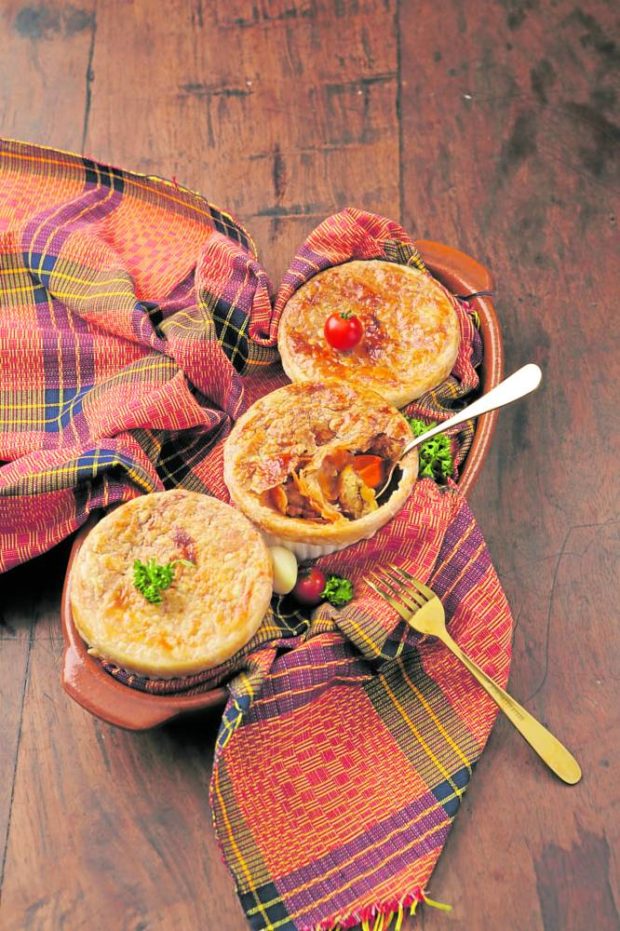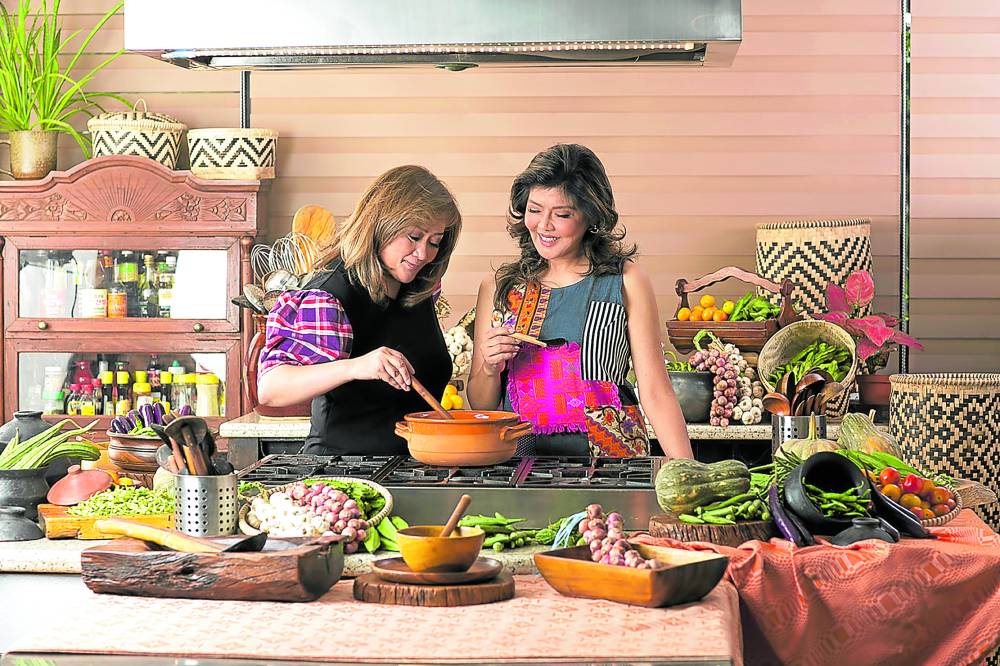Sen. Imee Marcos has a voracious appetite—not for food, but for doing more, be it movie producing, vlogging and now, publishing a cookbook. There’s no political agenda in “Pinakbest,” maintained chef/columnist and close family friend Reggie Aspiras, who lent her hand to this passion project. The title is a portmanteau of the classic pinakbet (Ilocano vegetable stew) and the best of treasured recipes.
When Aspiras egged Marcos to come out with a cookbook 14 years ago, the chef was surprised that Marcos’ recipes were beautifully handwritten. Hence, in the 126-page paperback cookbook, Marcos distinguishes her recipes with handwritten titles.
“Pinakbest: Recipes from the Marcos Kitchen and More” is an intimate portrait of the senator’s growing years and the travels with her three sons as told through photographs and anecdotes that accompany the food.
“It looks like a family scrapbook,” said Aspiras.
The recipes are diverse, ranging from the Ilocano daily fare such as pokpoklo (seaweed salad) to travel impressions such as Imee’s Dacquoise, her wafer cake layered with buttercream and meringue, of which the original Michelin-starred restaurant version was a glorified sans rival, noted Marcos in the book.
‘Guerilla’ cook
In a Zoom presscon, Marcos said her adventurous palate was partially cultivated by her mother, Imelda, a skilled cook.
She rated herself a “solid B” in the kitchen. Her sons describe her as a “guerilla” cook. Marcos learned to make do with a single burner and what was in the fridge, just to appease their growing appetites.
Sassy and rebellious in her youth, Marcos was sent to the kitchen as punishment and learned not only about cooking but also the relationship between food and politics. “Politics was like catering,” she said.
The Marcos kitchen constantly prepared food and kept ample supply for her father’s sudden meetings with large groups at home. She realized that the way to earn the voters’ confidence was through the stomach. One could win an election if thousands of food packs were distributed, she said in jest in Tagalog.

Much of the book highlights traditional Ilocano food such as dinardaraan (pork innards in blood stew) and tupig (rice cake roasted in banana leaves) and her father’s vegetable favorites like dinengdeng, pinakbet and poqui-poqui (eggplant and tomatoes with scrambled eggs). Pancit batil patong (noodles with carabeef and poached egg) is one of the senator’s favorites.
While Ilocano cuisine is lower in saturated fats except for bagnet (twice-fried pork) and abundant in vegetables, the Visayan cuisine of Imelda Marcos is rich, such as the pochero (tomato-based meat and vegetable stew) and tinola sa gata (chicken stew in coconut cream), and her signature relleno. Balut addict
Marcos described her mother as an “unrepentant balut addict.” The older Marcos would enthusiastically share her fascination to foreign guests, who cringed at the thought of eating duck embryo.
Thinking that their reaction was culinary snobbery, she served the balut in a velvety sauce from the stock and encased it in puff pastry. After the guests had praised the dish, she revealed that the “disgusting” duck embryo was the main ingredient. Restaurateur Glenda Barretto used her recipe for the Balut Surprise served at Via Mare.
After the Edsa Revolution, Morocco became a part of Marcos’ life, which she candidly described in the book as “driven by exile and causing deep grieving.” Yet, her sojourn fortuitously led to discoveries on Middle Eastern cuisine. This chapter features popular dishes such as hummus and tabouleh.
Since Morocco was a Muslim country, pork was not available. Marcos said she learned to make lechon na kambing (goat), lechon na karnero (sheep) and lamb adobo.
Those close to Marcos would know her story behind the Singapore chapter. As with the recipes from Morocco, the Singaporean food has been adapted to their household fare with some innovations. Aspiras claimed that the senator’s chili crab is the best. Instead of picking with the hands, the crab meat has already been peeled and then served on the shell with a drizzle of sauce.
“No slavery involved,” said Marcos. “My Filipino spiel is that it is simplified, less oily, boiled at nahimay na (deshelled),” she said.

The Assam Fish with tamarind paste has become a favorite in the Romualdez side. Marcos localized it with pineapple chunks and okra.
Out of love for her athletic sons, she created recipes that were nutritious, tasty and appetizing to look at, like colorful beet and feta salad and quinoa salad with her secret preserved lemon. These were a contrast to her father’s stringent wheatgerm and soy milk, which she described as parusa (punitive).
La Union connection
Beyond Marcos’ visual narrative, the content reflects the enduring friendship between the Aspirases and the Marcoses. Chef Reggie’s father, Jose Aspiras, was President Ferdinand Marcos’ first press secretary. As the country’s first and longest-serving tourism minister, the older Aspiras turned tourism into an industry and a major dollar earner.
Aspiras recalls that en route to Ilocos Norte, the Marcoses would make a pit stop at their beach house in La Union. Her mother and inspiration, Amparo, prepared sumptuous meals using fresh catch and vegetables harvested from backyards.
In “Pinakbest,” Aspiras includes her observations and tips. To give readers options, she complements Marcos’ recipes with her versions such as the dinakdakan (roast pork with chilies) with lechon and lechon baka marinade and Rainbow Hummus in green, fuchsia and orange. She balances the savory flavor of the ata-ata (rare beef tenderloin) with a refreshing radish salad. She shows other possibilities for the balut with her Balut Pasta.

Paying homage to their household staff, the book shares Maximo Silvestre’s igado (pork tenderloin and innards) from Pangasinan, which was dry, while Minister Aspiras’ caregiver Felipe Laroco made a soft and wet version.
During the production, Aspiras noted that Marcos was hands-on in the table settings. The senator could make inexpensive plates from Divisoria look stylish, and spiced up the settings with inabel, woven cotton fabric from Ilocos.
You can look at “Pinakbest” either as Imee’s life told in recipes or the ever-evolving Filipino cuisine which includes foreign foods or foreign ingredients that have been adapted or tweaked. Either way, it’s a book about a life well lived or food well digested. INQFor orders, call tel. 0917-1538008; follow @randcoessentials on Instagram, R and Co Essentials on Facebook.









































